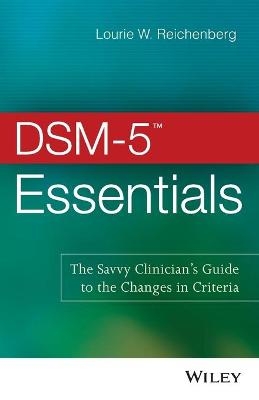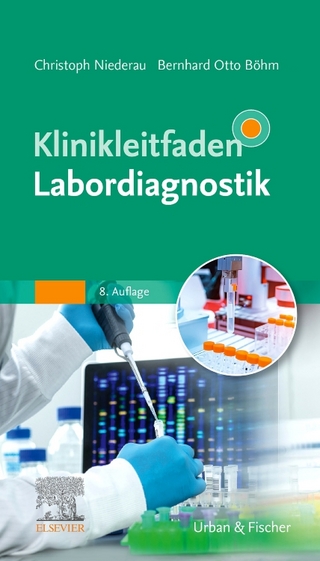
DSM-5 Essentials
John Wiley & Sons Inc (Verlag)
978-1-118-84608-7 (ISBN)
Everything you need to know about the DSM-5™ in an organized and concise presentation
Providing you with a quick and easy way to get up-to-speed on recent changes to the two main classification systems—DSM-5 Essentials highlights these changes in a logical and systematic manner so that you can easily make the transition from DSM-IV to DSM-5.
Author Lourie Reichenberg offers health care providers, instructors, clinicians in practice settings, and office staff who do coding for insurance reimbursement the information they need to do their jobs smoothly and efficiently with coverage of:
The twenty classifications of disorders
Emerging measures and models
The future of diagnosis and treatment planning
Matching clients' needs with the best evidence-based treatment
Major changes to the DSM-5 such as the replacement of the multiaxial system, the developmental and lifespan approach, and cultural and gender considerations
Arranged in the same sequence as the DSM-5, DSM-5 Essentials covers what has changed from the DSM-IV, what these changes mean for diagnosis, and the implication of these changes on the selection of effective, evidence-based treatment.
LOURIE W. REICHENBERG is in private practice in Falls Church, Virginia. Her practice includes people with a broad range of concerns and mental disorders, notably adjustment, mood, and anxiety disorders. She has a particular interest in working with people who have lost family members to suicide, people in crisis, and as part of the treatment team for people with bipolar disorder. In addition to individual and couples counseling, she also provides workshops and educational programs to community, governmental, and mental health agencies and also offers training and supervision to people seeking licensure as counselors, as well as to practicing clinicians. She has provided DSM-5 training to counselors and other mental health professionals.
Preface viii
How to Use This Book x
1 Introduction 1
Introduction to DSM-5 1
The International Classification of Diseases (ICD) 8
Conclusion 11
2 The 20 Classifications of Disorders 12
Neurodevelopmental Disorders 13
Intellectual disabilities * Communication disorders * Autism spectrum disorder * Attention-deficit/hyperactivity disorder * Specific learning disorder * Motor disorders Schizophrenia Spectrum and Other Psychotic Disorders 20
Schizotypal (personality) disorder * Delusional disorder * Brief psychotic disorder * Schizophreniform disorder * Schizophrenia * Schizoaffective disorder * Catatonia Bipolar and Related Disorders 24
Bipolar I, bipolar II, and cyclothymic disorder * Other bipolar disorders Depressive Disorders 27
Disruptive mood dysregulation disorder * Major depressive disorder * Persistent depressive disorder (dysthymia) * Premenstrual dysphoric disorder * Substance/ medication-induced depressive disorder * Depressive disorder due to another medical condition * Other specified * Unspecified Anxiety Disorders 35
Separation anxiety disorder * Selective mutism * Specific phobia * Social anxiety disorder * Panic disorder * Agoraphobia Obsessive-Compulsive and Related Disorders 39
Obsessive-compulsive disorder (OCD) * Body dysmorphic disorder * Hoarding disorder * Trichotillomania (hair-pulling disorder) * Excoriation (skin-picking disorder) * Substance/medication-induced and OCD related to medical condition * Other specified * Unspecified Trauma- and Stressor-Related Disorders 45
Reactive attachment disorder * Disinhibited social engagement disorder * Posttraumatic stress disorder * Acute stress disorder * Adjustment disorders * Other specified * Unspecified Dissociative Disorders 50
Dissociative identity disorder * Dissociative amnesia * Depersonalization/derealization disorder * Other specified and unspecified Somatic Symptom and Related Disorders 52
Somatic symptom disorder * Illness anxiety disorder * Conversion disorder (Functional neurological symptom disorder) * Psychological factors affecting other medical conditions * Factitious disorder * Other specified * Unspecified Feeding and Eating Disorders 56
Pica and rumination disorder * Avoidant/restrictive intake disorder * Anorexia nervosa * Bulimia nervosa * Binge-eating disorder * Other specified * Unspecified Elimination Disorders 61
Encopresis * Enuresis Sleep-Wake Disorders 62
Sexual Dysfunctions 64
Gender Dysphoria (formerly Gender Identity Disorder) 65
Disruptive, Impulse-Control, and Conduct Disorders 67
Oppositional defiant disorder * Intermittent explosive disorder * Conduct disorder * Pyromania * Kleptomania * Other specified * Unspecified Substance-Related and Addictive Disorders 71
Substance use disorders * Caffeine withdrawal * Cannabis withdrawal * Gambling disorder Neurocognitive Disorders 81
Delirium * Major or Mild neurocognitive disorders * Specified disorder * Unspecified Personality Disorders 83
Paraphilic Disorders 84
Other Mental Disorders 85
Medication-Induced Movement Disorders and 86
Other Adverse Effects of Medication Other Conditions That May Be a Focus of Clinical Attention 87
3 Emerging Measures and Models 92
Assessment Measures 92
Cultural Formulation 95
Alternative Model for Diagnosing Personality Disorders 97
Conditions for Further Study 97
Conclusion: The Future of Diagnosis and 103
Treatment Planning
References 105
About the Author 107
Author Index 109
Subject Index 110
| Erscheint lt. Verlag | 31.1.2014 |
|---|---|
| Verlagsort | New York |
| Sprache | englisch |
| Maße | 140 x 216 mm |
| Gewicht | 157 g |
| Themenwelt | Geisteswissenschaften ► Psychologie ► Klinische Psychologie |
| Geisteswissenschaften ► Psychologie ► Persönlichkeitsstörungen | |
| Medizin / Pharmazie ► Medizinische Fachgebiete ► Psychiatrie / Psychotherapie | |
| Studium ► 2. Studienabschnitt (Klinik) ► Anamnese / Körperliche Untersuchung | |
| ISBN-10 | 1-118-84608-7 / 1118846087 |
| ISBN-13 | 978-1-118-84608-7 / 9781118846087 |
| Zustand | Neuware |
| Haben Sie eine Frage zum Produkt? |
aus dem Bereich


